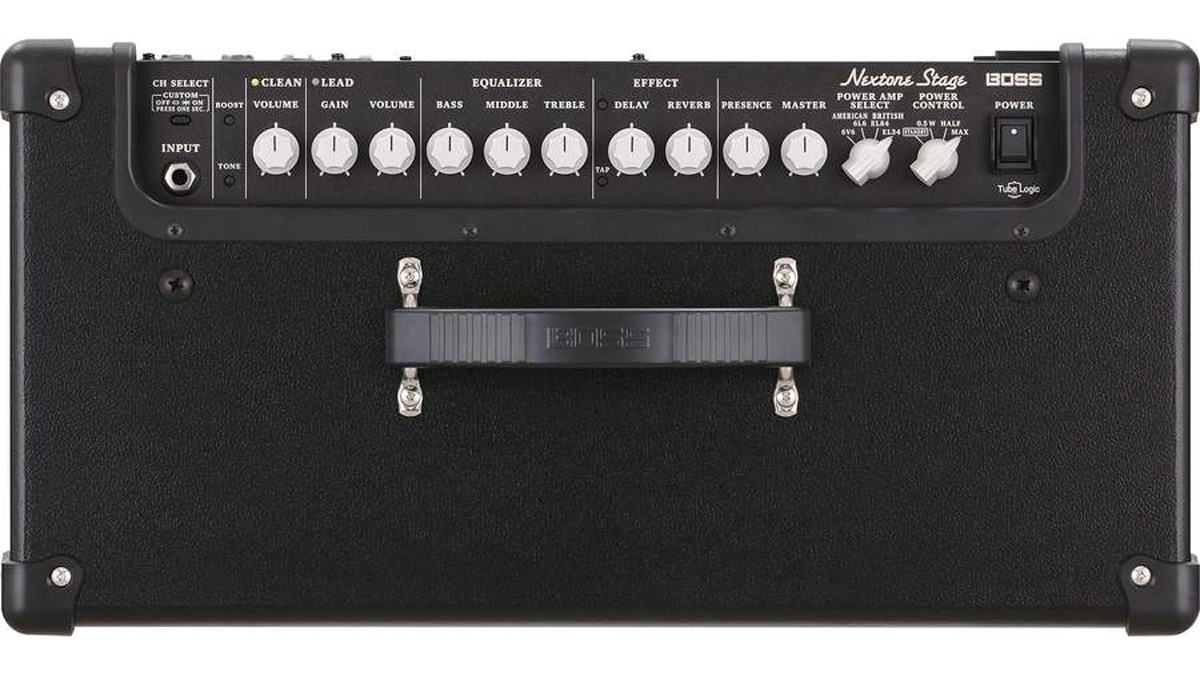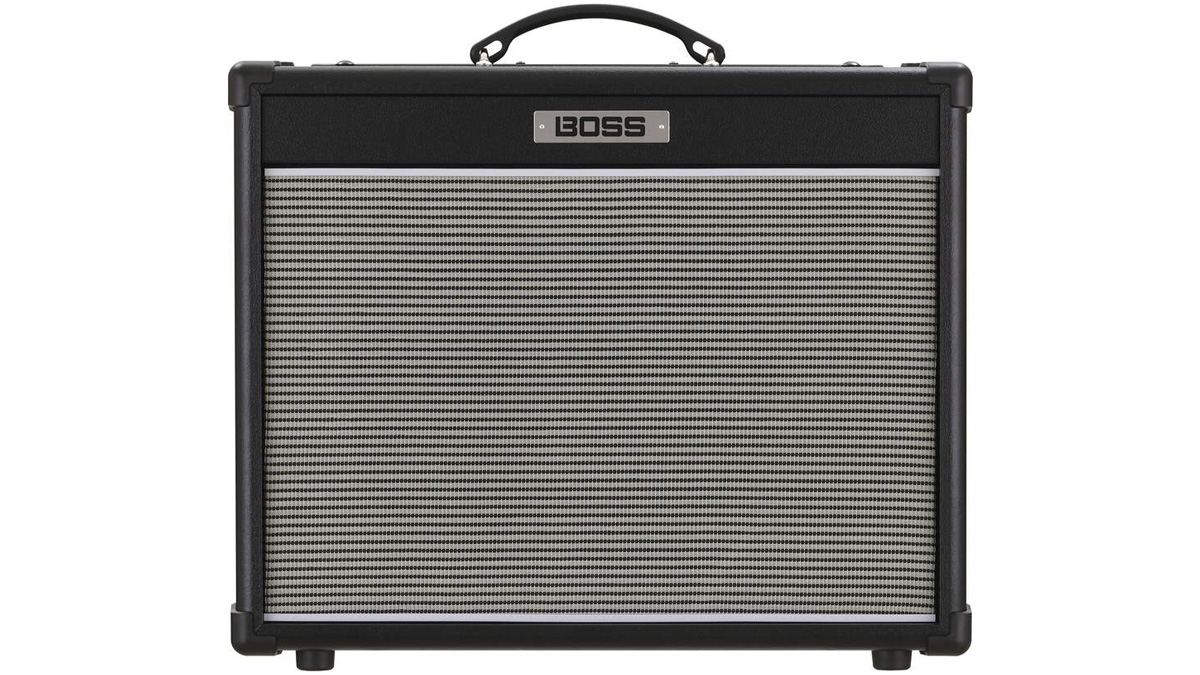MusicRadar Verdict
The Nextone Stage may not be the most versatile combo around, but it is one of the best-sounding solid-state amps on the market.
Pros
- +
Impressive tube-like tone
- +
Choice of valve types
- +
Reliable solid-state circuitry
Cons
- -
Different output stages don't sound as different as expected
- -
Lacks the effects of the Katana
MusicRadar's got your back
More than any other manufacturer, Roland has always pushed the boundaries of guitar technology, from guitar synthesis to the original CE-1 Chorus Ensemble, introduced way back in 1976, which spawned today’s hugely popular Boss range of effects.
Alongside the recently rejuvenated Blues Cube range, Roland chose the Boss brand a few years ago for its Waza Craft heads and the massively successful Katana range of digital modelling amps - the first time the Boss badge has appeared on a guitar amplifier, but not the last.
Now there’s another new amp range to tempt us, combining Roland’s clever Tube Logic technology with digital control for a new vista of sonic temptation, the Nextone. There are two combos in the Nextone mini series: the 80-watt Artist 1x12 and the slightly more compact 40-watt Stage combo, which we’re taking a look at here.
The Nextone Stage looks classy with its silver-trimmed grille cloth, set off by the famous Boss badge. The control panel has a familiar old-school look and feel, with separate volume and gain controls for clean and overdrive channels, sharing a standard bass, mid and treble EQ.
Two small buttons operate boost and tone functions, the latter working simultaneously as a bright switch for the clean channel and a mid boost on the drive channel. There are level controls for the built-in delay and reverb, and a master section with knobs for presence and master volume, alongside an output stage selector and power control.
The Nextone Stage looks classy with its silver-trimmed grille cloth, set off by the famous Boss badge
The output stage selector is a big part of what makes the Nextone special. Boss’s clever Tube Logic technology uses digitally- controlled analogue solid-state components to mimic the dynamic response and clipping characteristics of a valve output stage.
In the standard Blues Cube range, Tube Logic emulates a 50s-era ‘tweed’-style amplifier; in the Nextone it’s been significantly expanded to replicate four classic output stages based on 6V6, 6L6, EL84 and EL34 valves. Like the Katana amps, the Nextone also benefits from a sophisticated editing app, which lets you dig into the amp’s inner workings and make subtle or not-so-subtle changes to EQ, effects and valve-specific features like bias and sag.
The Nextone’s onboard effects are limited to delay or tremolo and digital reverb, with three different delay and reverb types available through the editor. Once you’ve edited your sounds to taste, you can load them into the Nextone’s single custom preset, accessed from the channel button on the control panel.
Other cool features include headphones/recording and line outputs, together with a programmable effects loop and a USB socket that records audio as well as hooking up the editor. The Nextone can be used with standard latching footswitches, or you can put more functionality at your feet with the GA-FC foot-controller.

In use, the Nextone sounds scarily realistic, with bouncy dynamic cleans and fat, touch- sensitive tweedy overdrives. The difference between the output stage types wasn’t quite as distinct as we’d hoped, although you can certainly hear classic Plexi, Tweed, Blackface and Vox characteristics as you cycle through different valve types. It’s more noticeable using clean sounds and mild overdrive; as you turn up the wick the subtle nuances gradually disappear. The effects are impressive and you can dial in any sound you want using the editor: for example, the software EQ has not one but two fully parametric midrange choices.
At lower volume the Nextone Stage sounds much like a real valve amp, without the drawbacks of valves. It has more functionality than the Blues Cube, but lacks the effects wizardry of the Katanas. The reverbs are great and the delay can be swapped for a decently usable tremolo, however there are currently no other effects and only one programmable patch.
Taken on its own, the Nextone is a great idea, however it faces stiff competition including, ironically, Boss’s own Katana range, which may not have the power amp control but has quite a few tricks of its own. However, if you don’t need bells and whistles but want to hear just how far solid-state can be taken, the Nextone is a great choice - maybe your next one.
“Built from the same sacred stash of NOS silicon transistors and germanium diodes, giving it the soul – and snarl – of the original”: An octave-fuzz cult classic returns as Jam Pedals resurrects the Octaurus
What’s the buzz? Meet Yellowjacket, Cherry Audio's recreation of EDP’s trend-setting Wasp from 1978
“A fabulous trip through all eight songs by 24 wonderful artists and remixers... way beyond anything I could have hoped for”: Robert Smith announces new Cure remix album










